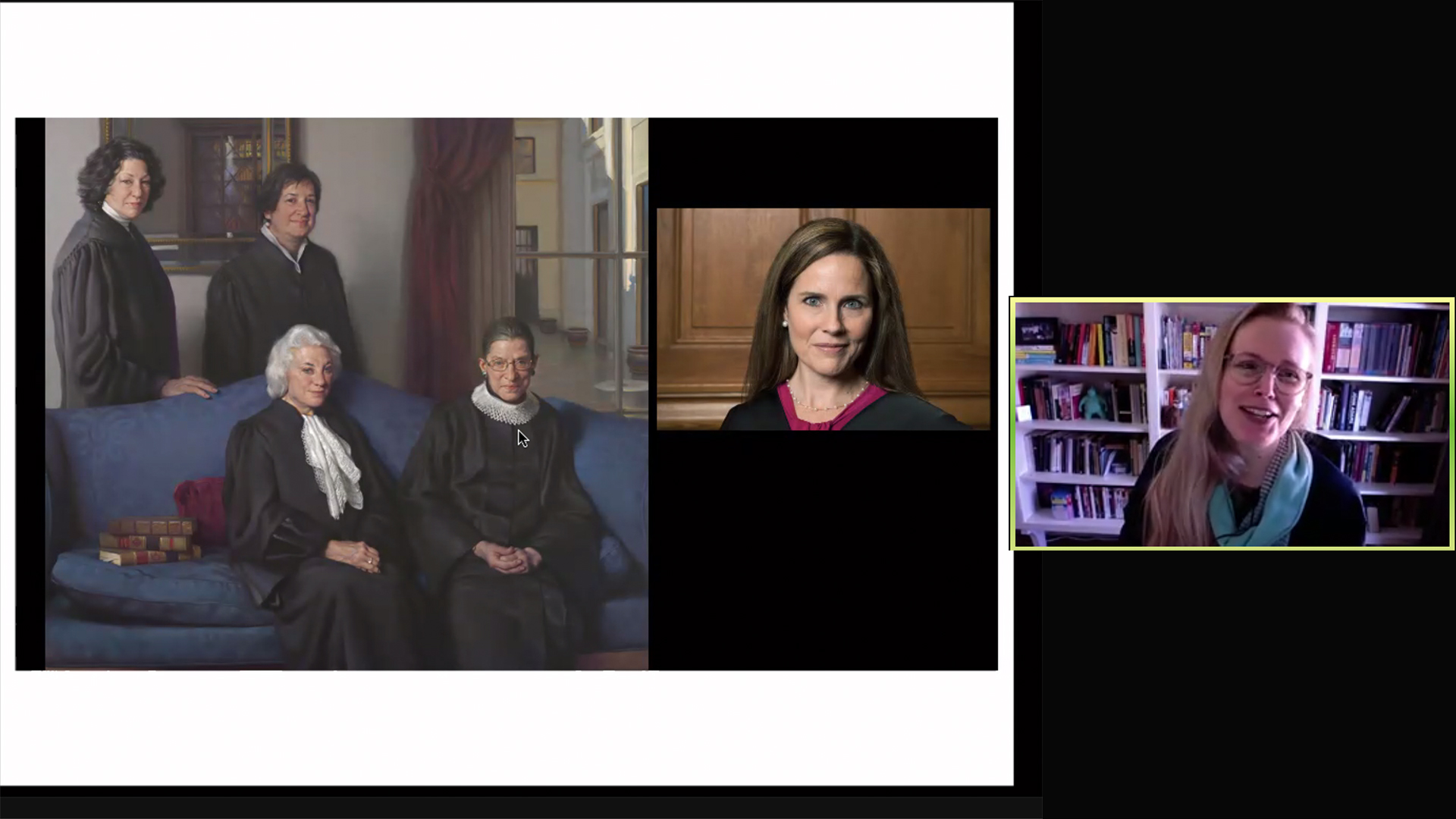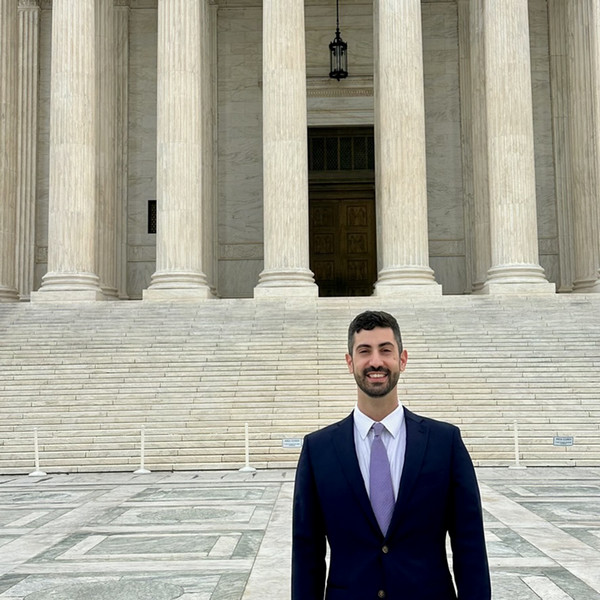Evaluating the Lives and Legacies of the Women of the US Supreme Court
By Rebecca Goldfine
Sorenson invited the Bowdoin community to listen in on the public Zoom event, which was organized and hosted by The Arctic University of Norway. The talk was part of a series of events the Scandinavian university hosted to celebrate Gender Awareness Week and International Women's Day on March 8.
International Women's Day falls within Women's History Month, or "Herstory Month," a month dedicated to recognizing the contributions women have made throughout history.
Following Sorenson's talk, two Norwegian professors—Professor Gunhild Hoogensen Gjorv from the Centre for Peace Studies and Associate Professor Sondre Torp Helmersen from the Faculty of Law—offered commentary on some of the differences between the US Supreme Court and Norway's highest court.
The most notable divergence is that the Norwegian court is not politicized like the Supreme Court of the United States (SCOTUS). Appointments of new judges are not based on political leanings or previous opinions. Perhaps for this reason, "We don't have quite the same example of women who have been trailblazers or feminist icons, like you do in the US, or stars like Ruth Bader Ginsburg," Helmersen said.
Five Trailblazers
Sorenson began her talk by focusing on the first woman to serve on SCOTUS—Sandra Day O'Connor, appointed in 1981 by President Reagan. O'Connor's legacy on the court was twofold: "She did a lot of writing on religious freedom and the separation of religion and state," Sorenson said.
"But when most people think of Sandra Day O'Connor, they think of the justice who saved Roe vs. Wade in a 1992 decision called Planned Parenthood v. Casey," Sorenson continued. "O’Connor brokered a deal with three other justices to write a more centrist opinion, but to preserve the central holding of Roe to maintain a woman's right to obtain an abortion."
Ruth Bader Ginsburg, who was appointed in 1993 by President Clinton and who died last fall, became one of the most recognized justices around the world, a celebrity buoyed by the popular documentary RBG.
"Whatever your politics are, there are lessons that all of us can take from Ruth Bader Ginsburg, in her relentlessness and quiet pursuit of her goals," Sorenson said. Ginsburg's determination drove her to surmount "more than her fair share of challenges through her life," including four bouts of cancer and blatant sexism in her career.
Ginsburg fought for years to eliminate sex-based discrimination and to achieve equal rights for women, and "established herself as being tenacious during oral arguments," Sorenson said.
Sonia Sotomayor, appointed in 2009 by President Obama, is the first Latina justice to serve on SCOTUS. Her parents grew up in Puerto Rico and raised their two children in New York City.
"She identifies very strongly as Latina and as having grown up in the Bronx," Sorenson said. And this strong identity likely plays a large role in her drive to protect minority rights based on religion, sexual orientation, ethnicity, and race.
Sotomayor is known for writing strong dissents, most notably her argument against President Trump's so-called Muslim travel ban. Calling Sotomayor the most liberal justice to serve on SCOTUS since Thurgood Marshall, Sorenson said that "going forward, I think we will consider her the new champion of minority rights."
Elena Kagan, appointed by President Obama in 2010, was the first female dean of Harvard Law School and the first female US solicitor general. She is known for being congenial and conversational, and perhaps because of her desire to get along with her colleagues, does not often write self-authored, independent opinions. "Maybe she isn't willing to pick fights and go out on a limb when she feels it is not necessary," Sorenson said.
That being said, Kagan becomes particularly animated in cases involving voting rights. "It is an area where she is particularly strong and stands out," Sorenson said, when assessing her possible legacy.
Amy Coney Barrett, the newest justice appointed by President Trump in 2020, is an originalist, meaning she reads the Constitution according to how she believes "the people" would have understood it at the time of its ratification. "This is the classic ‘original meaning’ vs. ‘framers intent’ debate, and she falls in the former category," Sorenson said.
Barrett is also a deeply religious Catholic. "Her deeply held religious beliefs, paired with her conservatism, means that liberals are concerned about decisions she could render in areas of LGBTQ protections, but most specifically, abortion," Sorenson said.
In the comments after Sorenson's talk, Professor Gjorv asked about the impact of lifetime court appointments, which seem to ensure that one generation's political beliefs remain embedded in the country's legal landscape for decades to come.
Sorenson said that while the current Supreme Court falls far to the right of the majority of Americans, the history of the court indicates that the justices are not impervious to evolving attitudes.
"Trends suggest that the court does pay attention to public opinion," she said, pointing to the example of legalizing same-sex marriage. "From the optimistic standpoint, we hope that an increasingly conservative court isn't engaging in the sort of actions that inhibit progressive change, where progressive change isn't defined as a liberal block of the population, but rather by the median average American."



